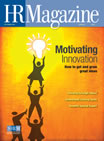 In evaluating and benchmarking tuition policies and practices, metrics and measurements are critical to show that "your investment is providing returns to the organization as well as the participant," says George Penn, senior director of the Corporate Executive Board, an Arlington, Va., organization that researches best practices.
In evaluating and benchmarking tuition policies and practices, metrics and measurements are critical to show that "your investment is providing returns to the organization as well as the participant," says George Penn, senior director of the Corporate Executive Board, an Arlington, Va., organization that researches best practices.
Data should include demographics on individuals applying for the program so you know you’re getting applicants from all levels of the organization, as well as acceptance rates and rates of employees turned down for the program.
Organizations also should track participant data over time to see how tuition assistance impacts performance and promotion rates "as these individuals leverage their new capabilities, skills and knowledge and move up in the organization," Penn says.
The final component of any solid measurement program is looking at retention rates of participants compared with nonparticipants. Ask yourself, Penn says: "Is this clearly a program that supports the retention of critical talent and improves their performance?"
"Measurement needs to be an integral part of managing human capital," says Michael E. Echols, Ph.D., director of the Nebraska-based Bellevue University’s Human Capital Lab and executive vice president of strategic initiatives for the university. "Measurement allows leaders to see the value produced and is critical to understanding which human capital activities—training programs, tuition assistance benefits, etc.—should be receiving more resources."
The $16.5 billion spent annually on tuition programs is not aligned with business and talent development goals as effectively as it could be, according to a conclusion drawn from a study of best practices in tuition reimbursement conducted by the lab. The study, reported last March, analyzed offerings at more than 400 companies.
Verizon Wireless invests $26 million annually in tuition assistance, and the program is "always under scrutiny," says Lou Tedrick, senior vice president of workforce development. "One of the things that has been really great for us is the rigor we’ve had around measuring turnover, promotions, moves, years of service and performance ratings. We’ve really used that to demonstrate the program’s value to the business."
Tedrick says data show that Verizon Wireless’ tuition assistance program and on-site education arrangements (in which local college faculty members teach courses at call centers and corporate offices) increase employee morale, attract job candidates and help retain employees as they apply new skills on the job.
An October 2008 survey of managers and supervisors of Verizon employees who had participated in its tuition assistance program found that 72 percent of managers saw "improved job performance" in employees, particularly in enhanced decision-making, leadership and computer skills, and improved productivity. Employees also were more likely to show increased interest in personal career development, internal training opportunities and additional work assignments and were more adaptable to change, Tedrick says.
Last year, an estimated 19 percent of Verizon Wireless’ 86,000 employees took part in the tuition assistance program. "We really view our program as a critical HR lever for attracting and recruiting good talent, for training good talent and for developing the talent we have," Tedrick says.
Advertisement
An organization run by AI is not a futuristic concept. Such technology is already a part of many workplaces and will continue to shape the labor market and HR. Here's how employers and employees can successfully manage generative AI and other AI-powered systems.
Advertisement


